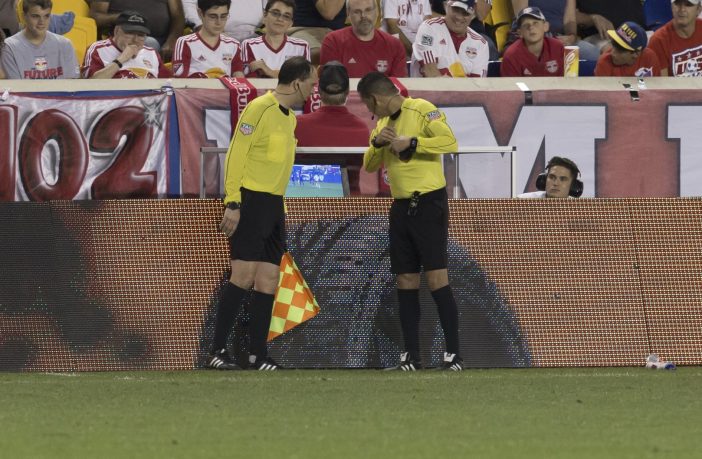With the debate over Video Assistant Refereeing (VAR) technology at the Men’s Football World Cup 2018 ringing in our ears, Ben Oakley and Alex Twitchen from the School of Education, Childhood, Youth and Sport take a look at its effects.
To date 18 high profile sports have introduced VAR technology, with Ice Hockey, American Football (partly) and Rugby League being early adopters in the 1990s (thestatszone.com has reviewed the development of video technology in sport). History demonstrates that sport gradually evolves, but video technology has accelerated this evolution. One example is technology developed by the English based Hawk-Eye company, particularly known for umpire assisted technologies used in cricket and tennis. In cricket, there were unintended consequences; players adapted to the technology changes, resulting in more success for spin bowlers, more LBW (leg before wicket) decisions and more stumpings. Using the 2018 Football World Cup as an example, Alex and Ben take a look at the good, bad and the ugly consequences of VAR in sport.
The Good
- Cheating and grappling at corners and free kicks is becoming more easily spotted.
- Overall, justice is perhaps more likely but there are still gross errors of judgement.
- In the group stages in 2018 (48 games) far more penalties (24) were awarded than previous tournaments with the attendant drama of each.
- In terms of script and narrative, the neat video package of an incident and any resulting redemption now becomes the story – good for TV audiences but has VAR marginalised the focus on outstanding aspects of open play?
The Bad
- Players now have an increased incentive to exaggerate contact against them in order to draw attention of the watching video assistant.
- The cross, corners and free-kicks, a source of so many World Cup goals, will grow in importance. Set pieces may become the key method of scoring, as in field hockey. This perhaps results in fewer instinctive moments of unscripted magic.
- Players remonstrating and crowding out the referee including drawing boxes in the air with their hands is now common place and perhaps a team-based referral system is needed.
The Ugly
- It might be argued that referees are placed under even more pressure knowing that their decisions are subject to review and scrutiny and to what extent does this then influence the way they control the game.
- Inconsistency of application of VAR in which decisions from game to game are referred for broadly similar incidents. The use of VAR in one game for a particular incident arguably becomes the precedent for all other games and frustrations may arise if an incident in one game is referred but something similar in another game is not.
- Football does not lend itself easily to constant pauses for the review of decisions and there is a disruptive effect on the flow and rhythm of the game when a decision is reviewed.
Given these possible ramifications of VAR use does it contribute positively to sport? As in other sports the introduction of video technology in football has had a number of intended and unintended consequences. It is also a good example of Kranzberg’s (1986) first law of technology which describes how the impact of technology depends on the way we as humans interact and apply the technology in question, stating that “technology is neither good nor bad; nor is it neutral”. Perhaps better questions to ask are, why it has been deemed necessary to introduce video assistance in sport and are we expecting too much from it? Such a deeper level of enquiry may help to uncover a good deal more about the nature of society we live in and our relationship with technology generally.



